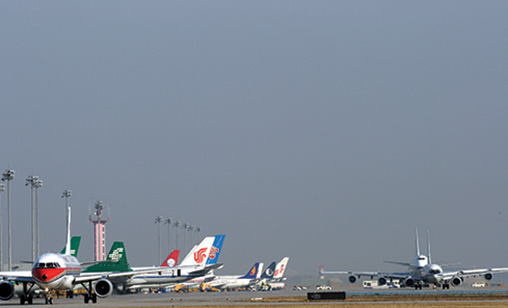News Backgrounder
China remains at the top of Asia-Pacific domestic air travel table
September 1st 2016
The unstoppable expansion of Asia-Pacific airlines continued across the globe in 2015, the International Air Transport Association (IATA) said in its latest World Air Transport Statistics (WATS) report. Read More »
The year book of the industry’s worldwide performance said the region’s airlines carried 1.2 billion passengers in 2015, which was 34% of the world’s airline market. The expansion added 10% more travelers to Asia-Pacific airlines in the period reviewed.
 |
The record breaking numbers were well ahead of Europe (26.2% of traffic or 935.5 million passengers) and North America’s 24.8% or 883.2 million passengers. The growth also outpaced expansion in the Middle East, where Gulf carriers had a 5.3% global market share in 2015, or 188.2 million passengers; an increase of 8.1% over 2014.
Worldwide, 3.6 billion passengers took scheduled airline journeys in 2015, which was an increase of 7.2%, or 240 million airline trips, compared with the previous 12 months.
The Asia-Pacific also swept the board in airport performance. Both the top five international/regional passenger airport pairs and the top five domestic passenger airport pairs operated within the region.
The world’s leading international/regional routes in 2015, compared with 2014, were Hong Kong-Taipei (5.1 million passengers, up 2.1%), Jakarta-Singapore (3.4 million passengers, down 2.6%), Bangkok Suvarnabhumi-Hong Kong (3 million passengers and a 29.2% increase), Kuala Lumpur–Singapore (2.7 million passengers up 13%) and Hong Kong-Singapore (2.7 million passengers and down 3.2%).
Domestically, compared with 2014, the top five city pairs in the world in 2015 were Jeju-Seoul Gimpo (11.1 million, up 7.1%), Sapporo-Tokyo Haneda (7.8 million, up 1.3%), Fukuoka-Tokyo Haneda (7.6 million, a decrease of 7.4% ), Melbourne -Sydney (7.2 million, down 2.2%) and Beijing Capital-Shanghai Hongqiao (6.1 million, up 6.1%).
Among the world’s largest domestic markets, India recorded the fastest passenger growth in 2015, at 18.8%, in a market of 80 million domestic passengers. It outpaced Russia (11.9% growth in a market of 47 million domestic passengers), China (9.7% growth in a market of 394 million domestic passengers) and the U.S. (5.4% growth, in a market of 708 million domestic passengers).
Despite China’s dominance, the region had only one representative, China Southern Airlines, in the top five airlines ranked by combined domestic and international passengers carried. Reflecting strong domestic business, the U.S.’s American Airlines (146.5 million), Southwest Airlines (144.6 million), Delta Air Lines (138.8 million) were the top three carriers in the world for total passengers carried, followed by China Southern Airlines (109.3 million) and Ryanair (101.4 million), respectively.
Three Asia-Pacific and Middle Eastern carriers were among the top five freight airlines for the 2015 calendar year, but the air cargo business remained in the doldrums, the WATS statistics revealed.
Global air freight and mail tonne kilometers increased by 2.3% last year against a capacity increase of 5.8% for the 12 months. As a result, the freight load factor dropped by 1.6%. The five leading airlines for scheduled air cargo carried were FedEx Express (7.1 million), United Parcel Service (4.5 million), Emirates Airline (2.5 million), Cathay Pacific Airways (1.6 million) and Korean Air (1.5 million).
The 3.6 billion airline passengers carried in 2015 were the equivalent of 48% of the Earth’s population. Airlines also transported 52.2 million tonnes of cargo, at a value of $6 trillion. The industry produced some $2.7 trillion in economic activity and 63 million jobs. IATA said.